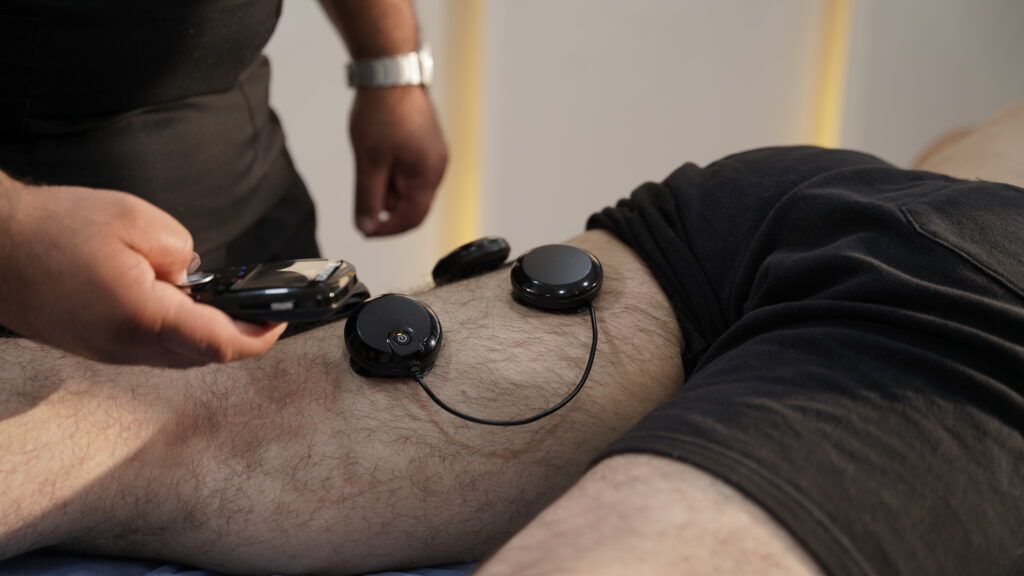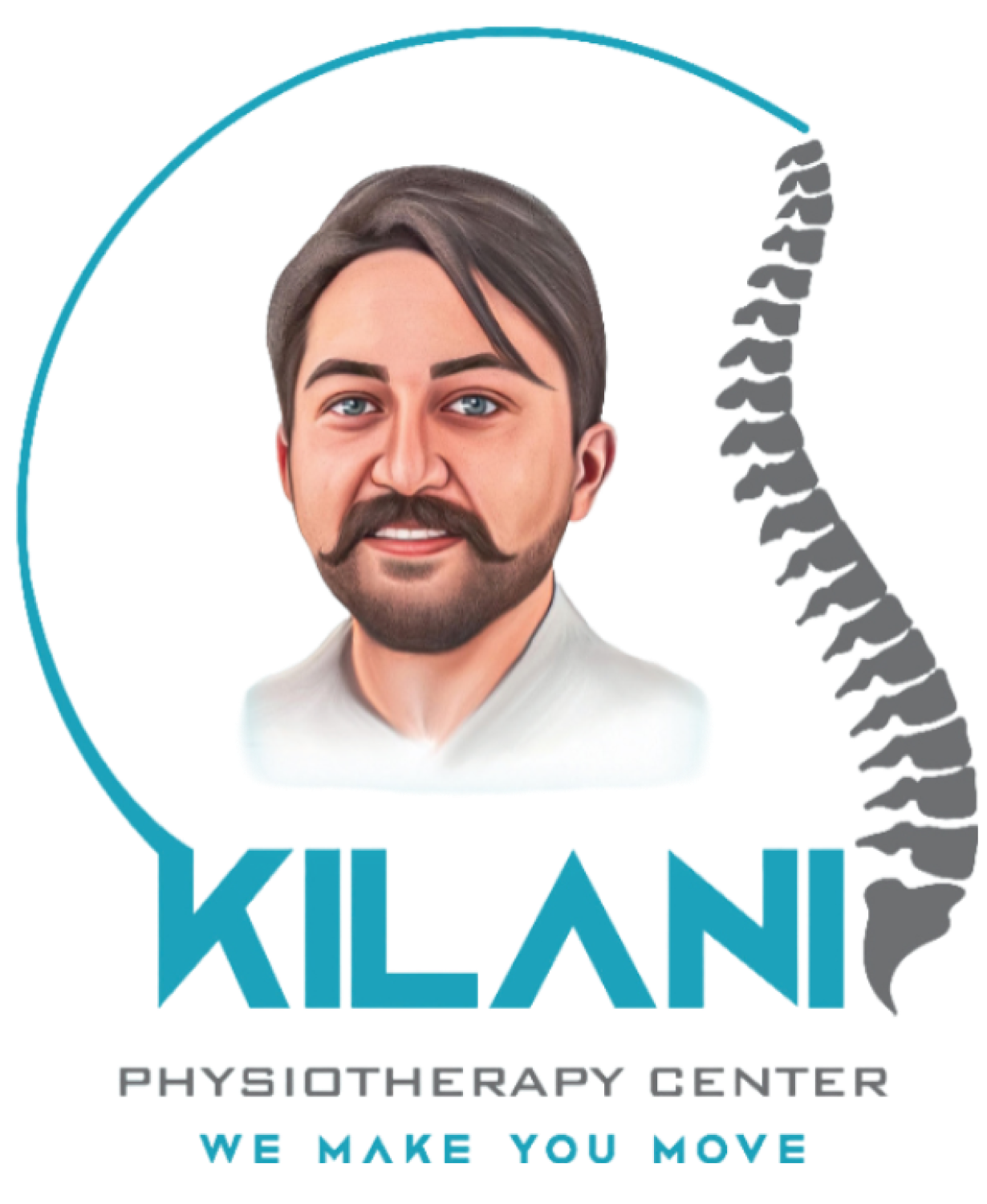Chondromalacia Patellae: Causes, Symptoms, Treatments, and the Role of Physiotherapy
Kilani
December 29, 2024

Chondromalacia Patellae Treatment Introduction
Chondromalacia Patellae Treatment, often referred to as “runner’s knee,” is a condition characterized by the softening and deterioration of the cartilage on the underside of the patella (kneecap). This condition can lead to pain and discomfort, particularly during movements that place stress on the knee joint. While it is a common issue among athletes, it can affect individuals of all activity levels.
CMP is the most common case we see in Kilani physiotherapy center for knee pain.
Causes
The primary cause of chondromalacia patellae is the misalignment or overuse of the knee joint, leading to excessive pressure on the cartilage beneath the patella. Contributing factors include:
Overuse: Repeated stress from activities like running, jumping, or squatting can gradually wear down the cartilage.this is the most common cause between our athletic clients in both branches Amman and Dubai
Injury: Direct trauma to the kneecap, such as a fall or impact, can damage the cartilage.
Misalignment: Poor alignment of the patella due to muscle imbalances, flat feet, or anatomical irregularities can cause uneven pressure on the cartilage.
Weak or Imbalanced Muscles: Weak quadriceps or hamstrings can destabilize the knee, increasing the risk of cartilage damage.
Arthritis: Early signs of osteoarthritis may also contribute to cartilage degeneration.
Symptoms
The symptoms of chondromalacia patellae can vary but commonly include:
Knee Pain: A dull, aching pain in the front of the knee, especially after prolonged sitting, climbing stairs, or physical activity.
Grinding Sensation: A feeling of grinding or clicking when bending or straightening the knee.
Swelling: Mild swelling around the kneecap.
Tenderness: Sensitivity when pressing on the kneecap or surrounding areas.
Reduced Range of Motion: Difficulty fully extending or bending the knee.
Diagnosis
A diagnosis is typically made through a combination of medical history, physical examination, and imaging studies. Key diagnostic steps include:
Physical Examination: The doctor evaluates knee movement, alignment, and tenderness.
Imaging Tests: X-rays, MRI scans, or CT scans help assess the cartilage and rule out other conditions.
Patellar Tracking Assessment: Identifying improper movement of the patella during knee motion.
Chondromalacia Patellae Treatment
Treatment for chondromalacia patellae aims to alleviate symptoms, restore knee function, and prevent further damage. Options include:
Non-Surgical Treatments
Rest: Reducing activities that worsen symptoms allows the cartilage to heal.
Ice Therapy: Applying ice packs to reduce pain and swelling.
Medications: Over-the-counter pain relievers like ibuprofen or acetaminophen help manage discomfort.
Physical Therapy: Exercises targeting the quadriceps, hamstrings, and hip muscles improve alignment and knee stability.
And this is our role inKilani physiotherapycenter.
Orthotics: Custom shoe inserts correct foot alignment and reduce stress on the knee.
Taping or Bracing: Supporting the patella with braces or taping techniques.
Surgical Treatments
If conservative treatments are unsuccessful, surgery may be considered. Options include:
Arthroscopy: Minimally invasive removal of damaged cartilage or realignment of the patella.
Cartilage Restoration Procedures: Techniques like microfracture surgery or cartilage grafting repair or regenerate cartilage.
Realignment Surgery: Correcting anatomical issues that cause patellar misalignment.
Role of Physiotherapy in Treatment
Physiotherapy is a cornerstone of non-surgical management for chondromalacia patellae. It focuses on alleviating pain, improving function, and preventing recurrence. Key roles of physiotherapy include:
Strengthening Exercises: Targeted exercises for the quadriceps, hamstrings, and hip abductors enhance knee stability and alignment. Strengthening the vastus medialis obliquus (VMO) muscle is particularly effective in correcting patellar tracking issues.
We found in kilani physiotherapy center based on studies that the best physiotherapy treatment for CMP is to focus on release vastus lateralis and strength vastus medialis obliquus due to imbalance between them
Stretching Routines: Stretching tight muscles, such as the iliotibial band and hamstrings, reduces strain on the knee.
Manual Therapy: Techniques like soft tissue mobilization and joint manipulation relieve pain and improve knee mobility.
Taping Techniques: Physiotherapists may use taping methods to support the patella and improve alignment during activities.
Gait Training: Correcting walking or running patterns prevents overuse and improper loading of the knee joint.
Education: Patients are educated about proper biomechanics, posture, and activity modifications to minimize knee stress.
Progressive Load Management: Gradual reintroduction of physical activities ensures safe recovery without overloading the joint.
Chondromalacia Patellae Prevention
Preventing chondromalacia patellae involves minimizing knee stress and maintaining joint health. Our physiotherapists in kilani physiotherapy center always try to aware our patients and athletic clients the prevention strategies before have CMP
Strategies include:
Regular Strength Training: Building strength in the muscles surrounding the knee for stability.
Dynamic Warm-Ups: Engaging in warm-up exercises before physical activities.
Supportive Footwear: Using appropriate shoes to ensure proper alignment and shock absorption.
Gradual Progression: Increasing activity intensity and duration gradually to avoid overuse.
Maintaining Proper Form: Using correct techniques during exercises and daily movements.
Conclusion
Chondromalacia patellae is a treatable condition, and early intervention is key to preventing chronic issues. Physiotherapy plays a vital role in managing symptoms and restoring knee function, offering a non-invasive approach to recovery. Individuals experiencing persistent knee pain should consult a healthcare professional for a personalized treatment plan and guidance on maintaining joint health.
If you suffer from this condition, do not hesitate to contact us at our branches in Jordan and Dubai.
